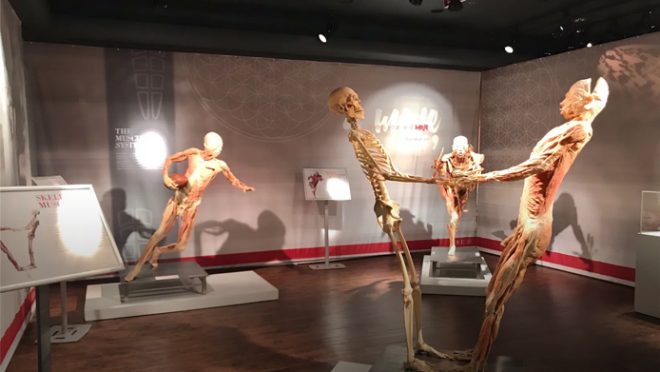Real Bodies Museum in Las Vegas: Ethical dilemma and unanswered questions
Real Bodies Museum in Las Vegas: Ethical dilemma and unanswered questions

Museums are dedicated to displaying or preserving culturally and historically significant objects. When we think of museums, we mostly associate it with historical artefacts, but there is museum which only houses human bodies in their original form.
The Real Bodies Museum at Horseshoe, Las Vegas, is renowned for preserving and displaying real human bodies. These bodies are plasticised which refers to the process of removing excess blood and fats from the human body and replacing it with plastics that mould their place. A creepy process indeed, where the anatomy of the human flesh remains at its original form.

But the intriguing fact is that there is very little information regarding where most of the bodies came from. Some bodies are legitimately donated by citizens, but in most cases these bodies are recognised as unclaimed specimens delivered by the Chinese Government. One can easily see that these bodies are of Asian descent. The Chinese medical universities claim these are unclaimed, and are perfectly legal to use in the name of science.
However, concerns linger in such matters. Human rights advocates have always shown a great deal of scepticism toward the claims made by an autocratic government. Human Rights Watch and Reuters raised questions alleging that these are the bodies of Chinese prisoners. There have been previous scandals regarding body trafficking in Russia and the Kyrgyz Republic. Even though the bodies obtained from North America and Europe are vetted and have permission in writing from the donors, but the bodies coming from China have no such legally or morally binding documents. All we have is the assurance from the Chinese officials that these are unclaimed.
There had been a scandal in Germany a few years ago where customs officers intercepted 56 bodies and hundreds of brain samples sent from the Novosibirsk Medical Academy to Von Hagens’ lab in Heidelberg, Germany. The cadavers were traced to a Russian medical examiner who was convicted last year of illegally selling the bodies of homeless people, prisoners and indigent hospital patients.

However, organisations that track human rights abuses in China, such the Laogai Research Foundation, have asserted that these unclaimed bodies belong to political prisoners and detainees associated with the Chinese Communist Party. Concerns have also been raised over the possibility that these bodies are those of Chinese mental asylums’ executed patients. China does not offer any legal documents on these bodies, therefore there is no other way to verify this.
Some religious institutions such as the Catholic Church raised concerns about displayed bodies to underaged children in such an open forum. The argument for them is that these bodies are meant to be decayed in their natural ways, but to use them for non-medical purposes are unethical.

Whatever the circumstance, it is fascinating that we have the opportunity to witness humans in their most primal form. It is a scary experience for most. But the ethical dilemma is also a factor. In many cases identities of these people are not known, and that not knowing if they consented to be a part of our amusement after their death raises a concerning ethical question.


